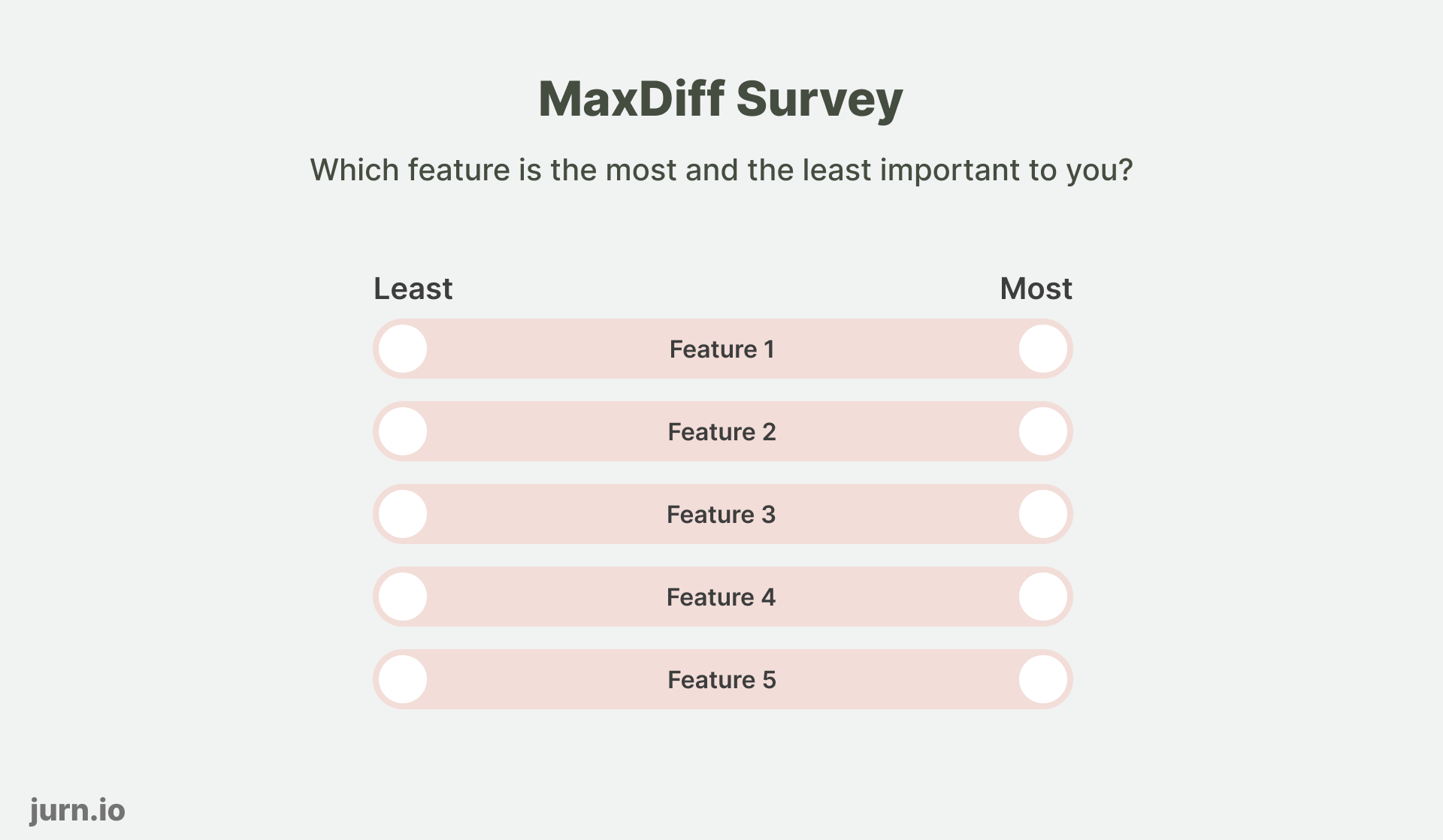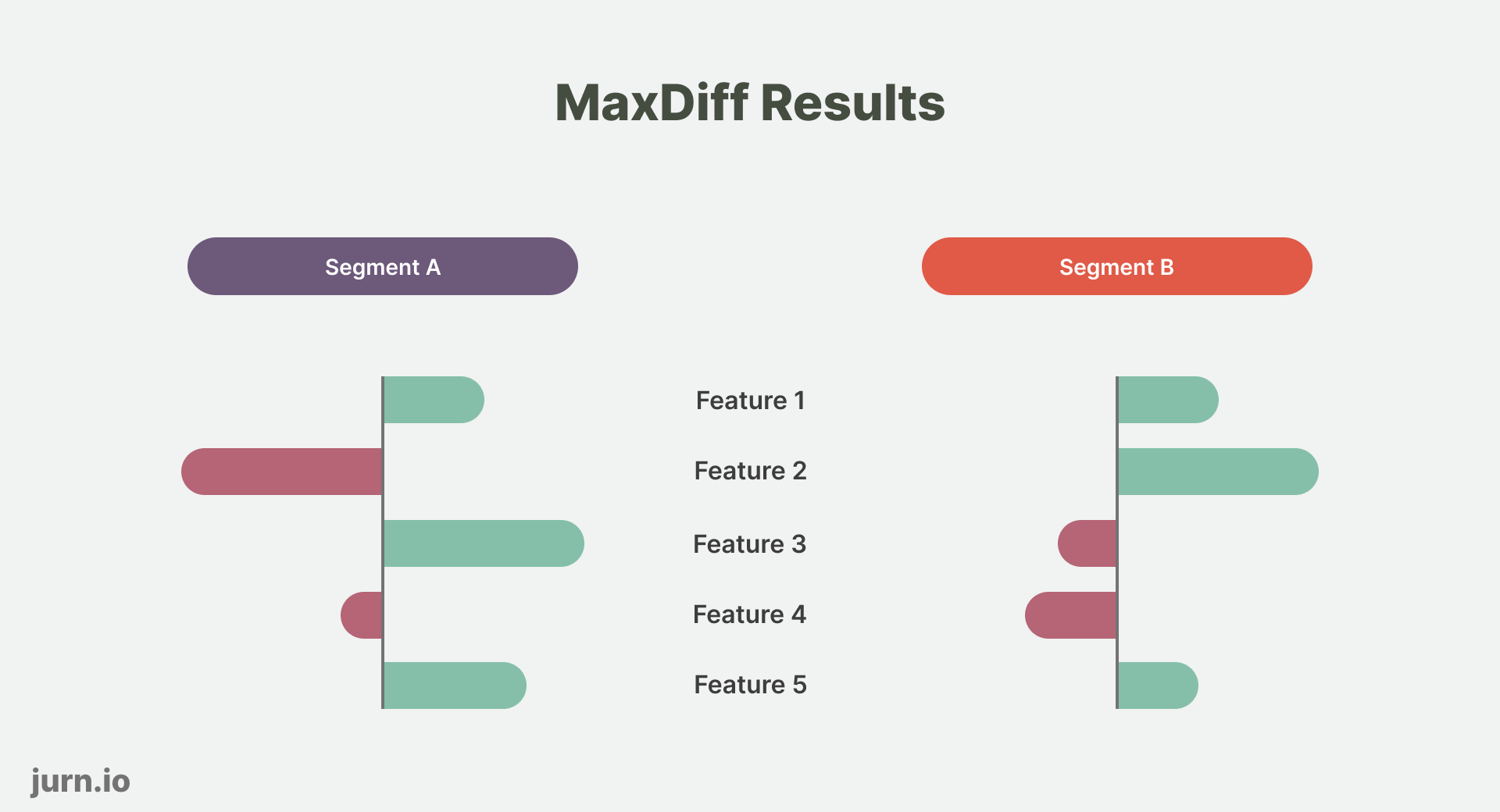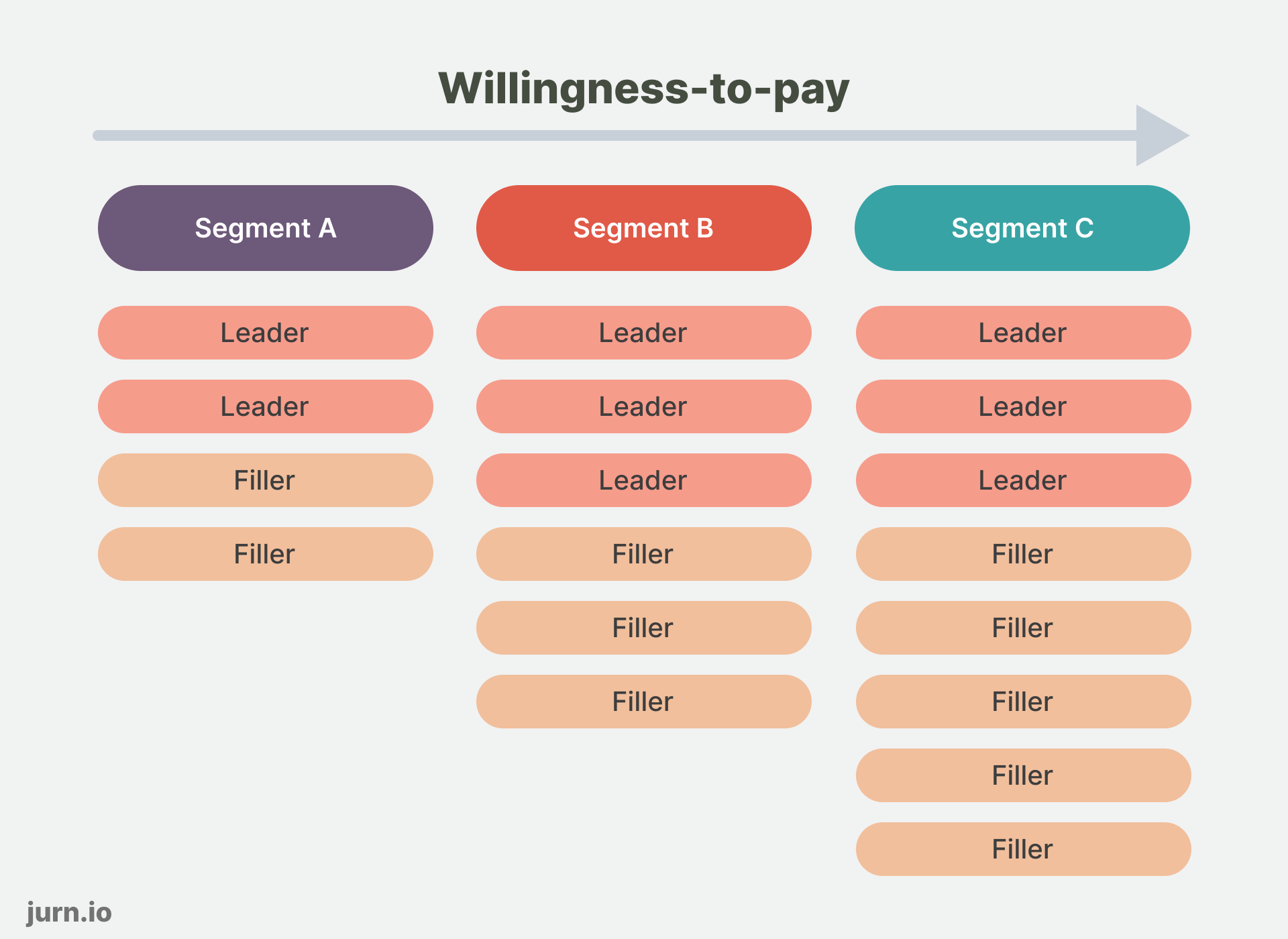Create Winning SaaS Pricing Plans with the Leader-Filler-Killer Framework

Monetization and packaging are essential for the success of your SaaS company.
Get it right and you'll generate more revenue, retain customers for longer and see more revenue expansion from these customers over time.
Get it wrong and you'll see low conversion, high churn, and little to no revenue expansion from existing customers.
One effective way to categorize a product's features and optimize its packaging and monetization strategy is the leader-filler-killer framework, popularized by the pricing strategy consultancy, Simon-Kucher.
In this post, we will take a closer look at the Leader-Filler-Killer framework and how you can use it to guide your decision-making when it comes to monetization and packaging.
What is the Leader-Filler-Killer framework?
The leader-filler-killer framework is a way to categorize a product's features into three categories: leader, killer, and filler. Each category serves a unique purpose in the product's packaging and monetization strategy.
Leader features are the product's most valuable and unique features. These features differentiate the product from its competitors and are the primary reason why users choose the product over alternatives. Leader features are essential to a product's success.
Filler features are the product's additional features that provide value but are not essential to the product's success. These features can be used to round out the product's offerings and add additional value to the user.
Killer features are features that users don't value and are not willing to pay for. These can diminish the value of the entire bundle as your customers will feel like they are paying for things they don't want.
Applying the Leader-Filler-Killer Framework
To effectively apply the leader-filler-killer framework to your own product, you will need to understand your product's features and how they provide value to your users.
The best way to do that is by doing conjoint analysis, more specifically, with a MaxDiff Conjoint Analysis.
MaxDiff Survey
A MaxDiff survey is a survey that measures the perceived value of different features of a product. In a MaxDiff survey, respondents are presented with pairs of features and asked to choose which feature they value more. This type of survey can help you identify your product's leader, filler, and killer features.
For example, a respondent might be presented with a pair of features such as "customizable exports" and "advanced reporting tools" and asked to choose which feature they value more. The survey then presents additional pairs of features until all features have been compared.
One of the benefits of a MaxDiff survey is that it can help you identify how different customer segments value different features.

An important catch
Before you rush to survey your users on w5hat they value the most, it's important to understand that the same feature can have different values for customers, depending on their individual needs.
Single Sign-On (SSO) and security compliance with international standards might be leader features for a large, publicly listed company, but these will be considered killer features for a freelancer who is working solo.
Thus, it's important to first segment your users into buckets with similar profiles before you can properly interpret the results of these surveys.

Packaging Your SaaS Plans
Once you know where each feature lands in the leader-filler-killer split, you can use this information to package your product offerings. A successful package needs:
- A "leader" feature: these make your customers want or "must" buy, as these are so compelling for driving upgrades, don't include too many in the same bundle, and risk giving away too much.
- One or more "filler" features: these are medium-value for your customers, they are nice to have but not absolutely necessary for them. Don't include too many of these to prevent your customers from paying for things they don't need but do use them to round out your offering and add additional value to your leader features.
- NO "killer" features: your users have a very low willingness to pay for these and as such, can diminish the value of the entire bundle for them. If you include too many, users will feel like they are wasting money as they are paying for things they don't care about. If a feature is defined as a "killer" for most users in a segment, but some have a very high willingness-to-pay for it, it's better to offer it as an add-on.

Conclusion
The leader-filler-killer framework is a powerful tool for those looking to optimize their product's packaging and monetization strategy.
By categorizing your product's features as leader, filler, or killer, you can identify your product's most valuable and unique features, its most compelling features, and its additional features that provide value but are not essential to its success.
With this understanding, you can optimize your product's packaging and monetization strategy to maximize its success in the market.